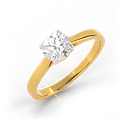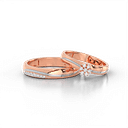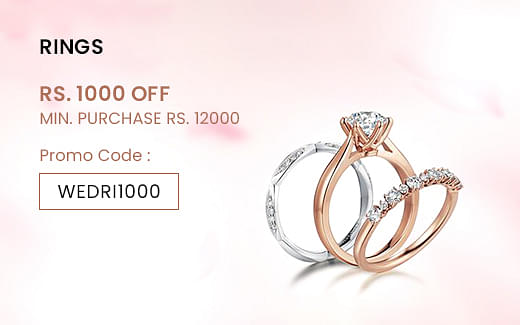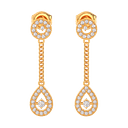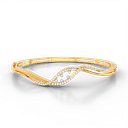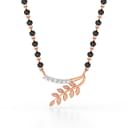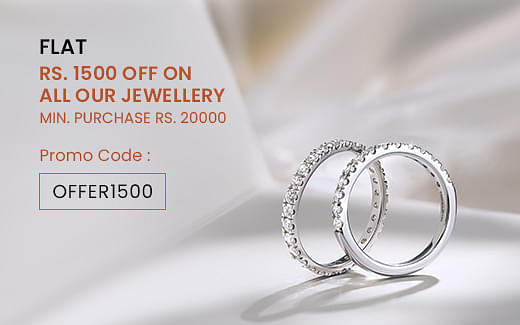Are you planning to buy perfect diamond jewellery but have no idea where to start and how to buy diamond jewellery online or offline? Diamond jewellery is not only an emotion and luxury but It’s also a significant investment, so it’s understandable to feel overwhelmed. But don’t worry, this guide will help you understand the basics of buying natural diamond jewellery and make an informed decision.
Research Before investing in diamond jewellery, it’s essential to do your due diligence and research the different types of diamonds available. This will help you understand the importance of each diamond’s quality and evaluate which popular diamond shape is right for you.
1. Understanding the 4 Cs of Diamonds
The 4 Cs of diamonds are carat weight, cut, colour, and clarity. These factors determine a diamond’s quality and value.
- Carat weight: The weight of a diamond is measured in carats. One carat is equal to 0.2 grams. The larger diamond, the more expensive it is.
- Cut: The cut of a diamond refers to its proportions, symmetry, and polish. A well-cut diamond reflects light and sparkles more, making it more expensive.

- Colour: The colour of a diamond ranges from colourless to yellowish-brown. The less colour a diamond has, the more valuable it is.
- Clarity: Clarity refers to the number and size of inclusions and blemishes in a diamond. The fewer inclusions and blemishes, the more valuable it is.
2. Determining Your Budget
Before you start looking for a diamond piece of jewellery, determine your budget. Diamond prices vary based on the 4 Cs you don’t want to overspend. A good rule of thumb is to spend two months’ salary on diamond jewellery. Ultimately, it’s crucial to find a balance between your budget and the quality of the diamond you desire. By determining your budget in advance and sticking to it, you can avoid overspending and make a smart and satisfying purchase.
3. Choosing the Right Diamond Shape
Choosing the right quality diamond shape is an important decision when purchasing a diamond. The shape of the diamond not only affects its appearance but also its value and durability. There are several popular diamond shapes to choose from, including round, princess, emerald, oval, pear, marquise, and cushion.
The round diamond is the most popular and fancy shape and is known for its lustre and fire. The princess-cut diamond is a square shape with pointed corners, making it a popular choice for engagement rings. The emerald-cut diamond has a rectangular shape with stepped facets, giving it a more elegant and sophisticated appearance.
The oval diamond is an elongated shape with a similar brilliance and fire to the round diamond, making it a favoured choice for engagement rings as well. The pear-shaped diamond is a mixture of oval and marquise shapes, creating a teardrop-shaped diamond that is unique and surprising.

The marquise-shaped diamond is an elongated shape with pointed ends, creating a dramatic and elegant appearance. The cushion-shaped diamond has rounded corners and is known for its vintage look and soft edges.
When choosing the proper diamond shape, it’s essential to think about your style, the setting of the diamond, and the overall appearance of the diamond. By selecting a diamond shape that complements your taste and style, you can ensure that your diamond is a reflection of your character and looks.
4. Evaluating Diamond Clarity
Evaluating diamond clarity is an essential aspect of purchasing a high-quality diamond. Diamond clarity refers to the absence of internal and external blemishes or inclusions in the diamond. These inclusions are natural imperfections that affect the diamond’s appearance and value.
The Gemological Institute of America (GIA) has established a clarity grading system that ranges from Flawless (FL) to Included (I). Flawless diamonds have no inclusions or blemishes visible under 10x magnification, making them the rarest and most valuable. Included diamonds have visible inclusions or blemishes that affect their appearance and value.

Diamond clarity is determined by several factors, including the number, size, location, and type of inclusions. Inclusions closer to the centre of the diamond are more noticeable and can impact the diamond’s brilliance and sparkle. A diamond with a higher clarity grade may be more valuable, but it may not be necessary if you prefer a larger or more unique diamond.
It’s recommended to purchase a diamond with a clarity grade of VS2 or higher, as these diamonds have no visible inclusions to the naked eye and offer an excellent balance of value and quality. However, if you’re purchasing a diamond for investment purposes, it’s best to opt for a higher clarity grade such as VVS or Flawless.
5. Considering Diamond Color
Considering diamond colour is an essential aspect of purchasing a high-quality diamond. Diamond colour refers to the absence of colour in the diamond, with the most valuable diamonds being completely colourless.
The Gemological Institute of America (GIA) has established a colour grading system that ranges from D (colourless) to Z (yellow or brown). Colourless diamonds, graded D, E, and F, are the rarest and most valuable. As the diamond colour moves down the scale towards Z, the yellow or brown tinge becomes more noticeable, decreasing the diamond’s value and brilliance.

It’s essential to consider your personal preferences and budget when considering diamond colour. If you prefer a warm, champagne-coloured diamond, a diamond in the G-J range may be suitable for you. However, if you prefer a bright and brilliant diamond, choose a diamond in the D-F range.
It’s worth noting that some diamond shapes, such as the round brilliant, tend to show colour more prominently than other shapes. In these cases, it’s recommended to choose a higher colour grade to ensure the diamond appears colourless.
6. Deciding on Diamond Cut
Cut plays a significant role in determining the quality and value of diamonds. When a diamond is well-cut, it reflects light and shows off stunning colour and sparkle. The value of a poorly cut diamond decreases significantly due to its dull appearance and lack of life. Diamonds can range from Excellent to Poor in terms of their cut grade.
An Excellent or Very Good cut diamond offers the best balance of beauty and value. In contrast, an excellent or fair cut grade may be suitable if you’re looking for a more affordable diamond. Choose a diamond that has an Excellent or Very Good cut grade for the best sparkle, brilliance, and fire.
7. Understanding Diamond Certification
independent institutions evaluate and verify diamond quality and authenticity through diamond certification. The diamond certification provides consumers with a sense of assurance that the diamond they are buying is genuine, and of the quality they are being advertised as.
A detailed analysis of a diamond’s physical properties, such as its weight, clarity, cut, and colour, is part of the certification process. The information is then compiled into a certificate, which includes an identification number and description of the diamond.
8. Selecting the Right Metal
Choosing the suitable metal for your jewellery is an important decision that can impact the durability, appearance, and overall value of your piece. Here are some factors to consider when selecting a suitable metal:
- Durability: Consider the durability of the metal based on the intended use of the jewellery. For example, platinum and gold are very durable and resistant to tarnish, making them good choices for everyday wear. Silver, on the other hand, is softer and more prone to scratches and tarnish.
- Colour: Different metals have different natural colours. Gold comes in yellow, white, and rose tones, while platinum is naturally white. Silver has a bright, reflective finish. Consider which colour will best complement the gemstones or design of your jewellery.
- Cost: The cost of metal can vary greatly, with platinum being the most expensive and silver being the most affordable. Consider your budget and the value you place on the durability and appearance of the metal.
- Maintenance: Different metals require different levels of maintenance to keep them looking their best. For example, silver requires regular polishing to prevent tarnish, while platinum and gold require minimal maintenance.
Ultimately, the right metal for your jewellery will depend on your personal preferences and needs. Consider these factors carefully when making your decision to ensure that you select a metal that will suit your needs and preferences for years to come.
9. Choosing the Right Setting
Choosing the right setting for your diamond jewellery is crucial to both its appearance and security. There are various popular settings available, such as prong, bezel, channel, pave, and tension. The prong setting is a classic choice and allows for maximum light to enter the diamond, enhancing its brilliance. Bezel settings offer a sleek and modern look and provide excellent protection for the diamond.
Channel settings securely hold multiple diamonds in a row, giving a seamless and sophisticated appearance. Pave settings have small diamonds set closely together, creating a shimmering effect. Tension settings use pressure to hold the diamond in place, giving an illusion of a floating diamond.
Consider your personal style, the occasion, and the type of diamond you have when choosing the right setting. With the right setting, your diamond jewellery can shine and stay secure for years to come.
10. Purchasing from a Reputable Jeweller
The key to purchasing quality jewellery at a fair price is to buy from a reputable jeweller. Positive customer reviews and a good reputation indicate a reputable jeweller. A reputable jeweller will also have the proper certifications and credentials, ensuring that the jewellery they sell is genuine and high-quality.
11. Taking Care of Your Diamond Jewellery
Diamond jewellery is a precious and valuable investment that deserves proper care and maintenance. To keep your diamond jewellery looking its best, it’s essential to take proper care of it.
Here are some tips to help you take care of your diamond jewellery Clean your diamond jewellery regularly using a soft-bristled brush and mild soap or specialized diamond cleaning solutions. Avoid exposing your diamond jewellery to harsh chemicals, such as chlorine or bleach, which can damage or discolour the metal.
What is the most important of the 4 Cs of diamonds?
The 4C’s of diamonds – cut, colour, clarity, and carat are all important factors in determining the quality and value of a diamond. Of these four, the most important is the cut as it has the greatest impact on the diamond’s brilliance. A good cut maximizes the stone’s light performance and enhances its beauty.






